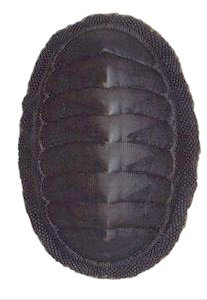TAHUA
11. We have tentatively compared the beginning of
side b on the A tablet with the beginning of side b on the C
tablet, for instance:
 |
 |
 |
|
 |
 |
 |
|
Ab1-8 (1335 + 7) |
Ab1-9 |
Ab1-10 (90 + 580 + 10 = 1344) |
Ab1-11 |
Ab1-12 |
Ab1-13 (1347) |
|
29 (→ 152 + 150) |
Oct 30 |
Halloween |
Samhain (*225) |
2 (306 = 123 + 183) |
Nov 3 (*227) |
|
20 Aug (*152) |
21 Aug |
22 Aug |
23 Aug |
24 Aug (236) |
25 Aug (*157) |
| |
|
ZUBEN ELGENUBI |
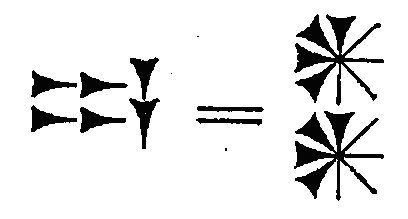 |
|
|
|
CLOSE TO
THE FULL
MOON: |
|
April 29 |
30 |
Beltaine (50 + 71) |
|
2 |
3 (123) |
4 |
|
19 Febr |
20 Febr (*336) |
21 Febr (29 + 21) |
22 Febr |
Terminalia |
|
|
|
|
BHARANI |
|
DENEBOLA |
MENKAR |
| Ko te
maitaki - ko te
maharoga |
hetuu e roia |
- |
e
ragi huhuki |
eaha ia |
ko te Rei oho ia mai |
|
Haro. To pull; popohaga o te rua raá, i
haro i te aka o te miro, on the morning of the second day, they
pulled up the anchor of the boat. He haro i te hagu a roto,
to draw in air, to breathe. He-haro te vaka i te au , the
boat is towed off course in the current. Vanaga. a. to point, to
raise the arm, to stretch out the hand or other member, to spread,
to point the yards. b. to hoist, to pull up, to entice. c. to
stiffen, to grasp, to squeeze. Haroharo, to point, to limp.
PS Sa.: falo, to stretch out. To.: falo, to stretch
out, to make tense. Fu.: falo, to stretch out, to lay hands
on. Churchill.
Hu. 1. Breaking of wind. T Mgv., uu,
to break wind. Mq., Ta.: hu, id. 2. Whistling of the wind, to
blow, tempest, high wind. P Pau.: huga, a hurricane.
Churchill. Mgv.: hu, to burst, to crackle, to snap. Ha.:
hu, a noise. Churchill.
|
 |
|
 |
 |
|
Cb1-15 (407 = 392 +
15) |
Cb1-16 (392 + 16
= 408) |
Cb1-17 |
|
Oct 31 (304) |
Nov 1 (*225) |
2 |
|
Al Zubānā-14a (Claws)
/
Visakha-16 (Forked)
/
Root-3 (Badger)
ZUBEN ELGENUBI (Southern Claw) =
α
Librae
(224.2),
ξ
Bootis,
ο
Lupi (224.5) |
KOCHAB (Kakkab, Babylonian for Star) = β Ursae Min.
(225.0),
ξ Librae (225.7)
 |
KE KWAN (Cavalry Officer) =
β
Lupi
(226.3),
KE KWAN =
κ
Centauri (226.4),
ZUBEN ELAKRIBI (Claw of the Scorpion) =
δ
Librae
(226.8),
π¹
Oct.
(226.9)
*185.0 = *226.4 - *41.4 = "Sept 22 (265) = equinox |
|
Bharani-2
(The Bearer)
/
Stomach-17
(Pheasant)
π Arietis (41.2),
MIRAM = η Persei
(41.3),
BHARANI = 41 Arietis (41.4),
τ² Eridani, σ Arietis (41.7) |
TA LING (Great Mound) = τ Persei (42.4)
*1.0 = *42.4 - *41.4 |
ρ
Arietis (43.0),
GORGONEA SECUNDA =
π
Persei
(43.5),
ACAMAR (End of the River) =
θ
Eridani
(43.6),
ε
Arietis (43.7),
λ
Ceti (43.9)
DENEBOLA (β Leonis) |
| e niu tu |
ki te ariki - e ka
hua ra tona rima |
koia kua iri i
ruga o te rima - e o to vaha mea |
|
Niu.
Palm tree, coconut tree; hua niu,
coconut. Vanaga. Coconut, palm, spinning top. P
Pau., Ta.: niu,
coconut. Mgv.: niu,
a top; niu mea,
coconut. Mq.: niu,
coconut, a top. Churchill. The fruit of
miro. Buck.
T. 1. Coconut palm. 2. Sign for peace. Henry
The sense of top lies in the fact that the bud end
of a coconut shell is used for spinning, both in the
sport of children and as a means of applying to
island life the practical side of the doctrine of
chances. Thus it may be that in New Zealand, in
latitudes higher than are grateful to the coconut,
the divination sense has persisted even to different
implements whereby the arbitrament of fate may be
declared. Churchill 2. |
.jpg)
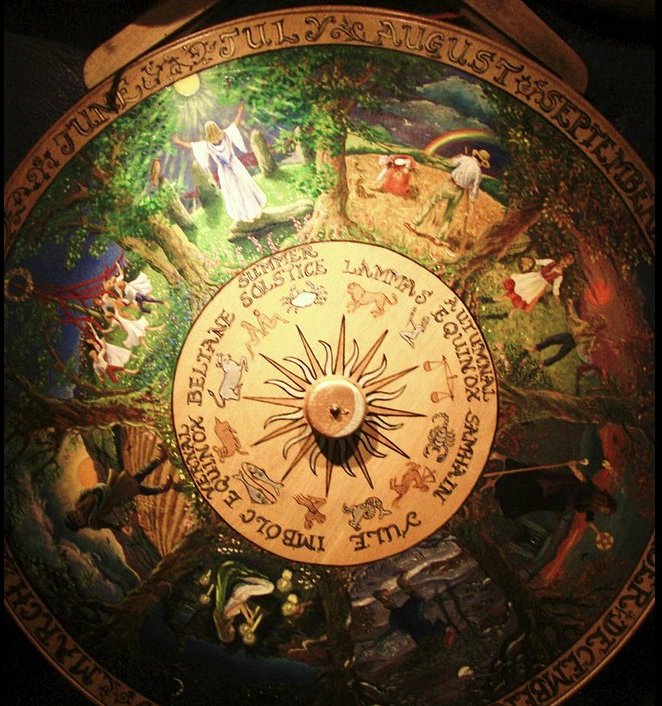
And then we have carried over information from the G
tablet to the C text.
 |
 |
 |
*223 |
|
Ca7-14 |
Ca7-15 (183) |
Ca7-16 |
| kua hua - ki te marama |
kua hahaú
hia |
te marama noho i te
nohoga |
|
March 20 (79) |
21 (0h) |
22 (81) |
|
θ Octantis (*364) |
SIRRAH |
ALGENIB
PEGASI |
|
Noho,
1. To sit, to stay, to remain, to live
(somewhere), to wait; ka-noho, you stay! (i.e.
'good-bye', said by the person leaving). 2.
Figuratively: he noho te eve, to be calm, at
peace; he noho te mana'u, to concentrate on
something, to fix one's attention on; ku-noho á te
mana'u o te tagata ki ruga ki te aga, the man thinks
constantly of his work. Vanaga. Seat, bench, dwelling,
marriage, position, posture, situation, session,
sojourn; to sit, to dwell, to reside, to rest, to halt,
to inhabit; noho hahatu,
to sit cross-legged;
noho hakahaga, apathy;
noho heenua,
countryman; noho kaiga,
native; noho kenu,
married; noho ke noho ke,
to change place; noho
muri, to stay behind;
noho noa,
invariable; noho opata,
to stand on a cliff;
noho pagaha, badly placed;
noho pepe,
table; noho tahaga,
bachelor, unmarried;
noho vie, married,
noho no, apathy,
stay-at-home, colonist, idler, inhabitant, inactive,
immobile, settler, lazy, loiterer.
Hakanoho, to
abolish, to rent, to lease, to enslave, to dissuade, to
exclude, to exempt, to install, to substitute, hostage.
Hakanohohia,
stopped. Nohoga,
seat. Nohoturi,
to kneel, genuflexion.
Nohovaega, to preside. Churchill. |
|
 |
*14 |
 |
*3 |
 |
 |
|
Cb1-15 (407 = 392 +
15) |
Cb2-5 (421, 29) |
Cb2-8 (392 + 32) |
Cb2-9 (425) |
|
e niu tu |
koia ra |
Niu |
|
Oct 31 (304) |
Nov 14 (318) |
Nov 17 (321) |
11-18 (322) |
|
ZUBEN ELGENUBI (*224) |
COR
SERPENTIS (*238) |
VRISCHIKA (*241) |
SCHEDIR |
|
BHARANI (*41) |
TAU-ONO
(*55) |
ZAURAK =
Boat
(*58.9) |
ν Tauri
(*59.9) |
|
May 1 (121) |
May
15 (135 = 500 - 365) |
May 18 (→ 51 * 8
= 408) |
May 19
(322 - 183) |
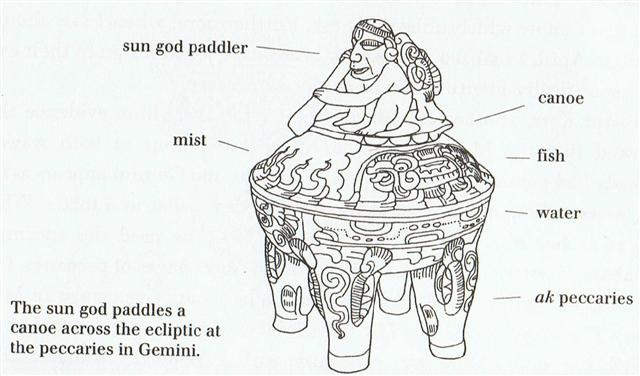
|
*4 |
 |
 |
 |
 |
|
Cb2-13 (429) |
Cb2-14 |
Cb2-15 |
Cb2-16 (432) |
| ihe manu ra |
kua pua to hau |
te kahi huga |
kiore - henua |
|
Hu. 1. Breaking of wind. T Mgv.,
uu, to break wind. Mq., Ta.: hu, id. 2.
Whistling of the wind, to blow, tempest, high wind. P
Pau.: huga, a hurricane. Churchill. Mgv.: hu,
to burst, to crackle, to snap. Ha.: hu, a noise.
Churchill. |
|
Nov 22 (326) |
23 |
24 |
25 (329) |
|
YED
POSTERIOR |
Heart-5 (Fox)
σ
Scorpii
(*247.0) |
ρ
Ophiuchi (*248.1) |
ANTARES |
HYADUM I
(*63.4) |
HYADUM II |
Net-19 (Crow)
AIN (*55 +
*10) |
no star listed |
|
May 23 (143) |
24 (*64 = *56 + *8) |
25
(145) |
26 (*66) |
 |
no glyph |
 |
 |
|
Gb8-30 (242) |
Ga1-1 |
Ga1-2 |
Next natural step should be to try to go back
241 glyphs also in the A text from the pair Vrishika /
Schedir to the 2nd Spout at the
pair Caph / Sirrah:
 |
 |
 |
|
Ca7-14 |
Ca7-15 (183) |
Ca7-16 |
| kua hua - ki te marama |
kua hahaú
hia |
te marama noho i te
nohoga |
|
March 20 (79) |
21 (0h) |
22 (81) |
|
θ Octantis (*364) |
SIRRAH |
ALGENIB
PEGASI |
| JAN 15 (*300) |
16 |
17 |
18 (383) |
*237 |
 |
 |
 |
 |
| Gb6-25 (229 + 178) |
Gb6-26 (408) |
Gb6-27 (180) |
Gb6-28 |
| θ Octantis (364.4)
*364.4 - *41.4
= *323.0 |
Al Fargh al Thāni-25 (Rear Spout) 0h (365.25)
CAPH = β Cassiopeiae, SIRRAH = α Andromedae (0.5), ε Phoenicis, γ³ Oct. (0.8) |
Uttara Bhādrapadā-27 (2nd of the Blessed Feet) / Wall-14 (Porcupine) ο Oct. (1.3), ALGENIB PEGASI = γ Pegasi (1.8) |
χ Pegasi (2.1), θ Andromedae (2.7) |
| 3-20 |
March 21 (80, 0h) |
22 (*1) |
23 (→ 2 * 41) |
| °March 16 (*360) |
Liberalia |
18 (54 + 23 = 77) |
19 (→ 3 * 121) |
| 2-21 (79 - 27 = 52) |
'Febr 22 |
Terminalia |
24 (→ 3 * 140) |
| "Febr 7 (403) |
2-8 (80 - 41 = 39) |
2-9 (31 + 9 = 40) |
2-10 (41) |
|
SEPT 12 (18 +
237) |
13 (256 → 16 *
16) |
14 (*177) |
15 |
16 |
 |
 |
 |
 |
 |
|
Ga7-6 |
Ga7-7 |
Ga7-8 (177) |
Ga7-9 |
Ga7-10 (56
+ 123) |
|
κ
Serpentis (239.3), δ Cor. Borealis,
TIĀNRŪ =
μ Serpentis (239.5),
χ Lupi, (239.6), ω Serpentis (239.7),
BA = ε Serpentis,
χ Herculis (239.8). κ Cor. Borealis, ρ Serpentis
(239.9)
*239.5
= *243.5 - *4.0 |
λ Librae
(240.0),
β Tr. Austr. (240.3),
κ Tr.
Austr. (240.4),
ρ Scorpii (240.8)
*240.4 - *41.4
= *199.0
*240.0 + *80.0
= 320.0 |
Iklīl al
Jabhah-15 (Crown of the Forehead) /
Anuradha-17 Following
Rādhā)
/
Room-4 (Hare)
ξ Lupi,
λ Cor. Bor.(241.1),
ZHENG =
γ Serpentis,
θ Librae (241.2),
VRISCHIKA = π Scorpii
(241.3),
ε Cor.
Borealis (241.5),
DSCHUBBA
= δ Scorpii
(241.7), η Lupi (241.9)
*241.5
= *243.5 - *2.0 |
υ
Herculis (242.3),
ρ Cor.
Borealis (242.4),
ι Cor.
Borealis (242.5),
θ Draconis (242.6), ξ Scorpii (242.7)
*242.4 - *41.4
= *201.0
*242.5
= *243.5 - *1.0
SCHEDIR |
16h (243.5)
ACRAB
= β Scorpii, JABHAT AL ACRAB = ω Scorpii
(243.3), θ Lupi,
RUTILICUS = β Herculis (243.5),
MARFIK =
κ Herculis
(243.7), φ Herculis (243.8)
|
|
Nov 15
(82 + 237) |
16 |
17 (121
+ 200) |
18 (*242) |
19 |
|
°Nov 11 |
12 (*236) |
13 |
14 (318) |
15 |
|
'Oct 19 |
20 |
21 (*214) |
22 (295) |
23 |
|
"Oct 5 (41 +
237) |
6 (*199) |
7 (280) |
8 (*201) |
9 |
First, though, it will be convenient to here summarize
some of the relevant pieces of what we earlier have documented
as regards the A text.
Side a on the C tablet evidently ends at Polaris
(*26, April 16) and its side b should then begin at October
17 (290, *210) - after having turned the tablet around.
Arcturus (*215, October 22) would therefore
be at Cb1-6, whereas our earlier investigations have
resulted in the idea
that on the A tablet Arcturus should be already at the first
glyph on side b.
I.e., Cb1-6 - Ab1-1 = 5 positions earlier in the A text:
 |
 |
 |
|
 |
 |
 |
|
Aa8-80 (1329) |
Aa8-81 (666) |
Aa8-82 |
Aa8-83 |
Aa8-84 |
Aa8-85 (1334) |
| ki to hatu huri |
ma to ua mata
- mae tae e ui hia
mai |
kua oho te tagata |
ki te henua |
- |
|
Oct 16 (260 + 29) |
17 (290) |
18 (472 - 181) |
19 |
20 |
21 (294) |
| |
|
|
THUBAN |
|
|
|
April 16 (314 *
1½) |
17 (16 * 29½) |
(365 + 108 = 473)
|
19 |
ALKES |
21 (111) |
|
To.
1.
Particle
sometimes
used
with the
article
in
ancient
legends;
i uto
to te
hau, the
ribbon
was in
the
float.
2. To
rise (of
the sun)
during
the
morning
hours up
to the
zenith:
he-to
te raá.
Vanaga.
1. Of. T
Pau.,
Ta.: to,
of.
Mgv.: to,
genitive
sign.
Mq.: to,
of, for.
2. This,
which.
Churchill.
Mgv.: To,
to make
a canoe
of
planks.
Mq.: to,
to build
a canoe.
Sa.: to,
to
build.
Churchill.
Huri. 1. To turn
(vt.), to overthrow, to knock down: huri moai, the overthrowing of the statues from
their ahus during the period of decadence on
the island. 2. To pour a liquid from a
container: ka huri mai te vai, pour me some
water. 3. To end a lament, a mourning: he
huri i te tagi, ina ekó tagi hakaou, with this
the mourning (for the deceased) is over, there shall
be no more crying. 4. New shoot of banana: huri maîka. Vanaga. 1. Stem. P Mgv.:
huri,
a banana shoot. Mq.: hui, shoot, scion. 2. To
turn over, to be turned over onto another side, to
bend, to lean, to warp; huri ke, to change,
to decant; tae huri ke, invariable; huri
ke tahaga no mai, to change as the wind; tae
huri, immovable; e ko huri ke,
infallible; huhuri, rolling; hakahuri,
to turn over; hakahuri ke, to divine. P Pau.:
huri, to turn. Mgv.: huri, uri,
to turn on one side, to roll, to turn upside down,
to reverse. Mq.: hui, to turn, to reverse. 3.
To throw, to shoot. 4. To water, to wet. 5. To
hollow out. Hurihuri: 1. Wrath, anger; kokoma hurihuri, animosity, spite, wrath, fury,
hate, enmity, irritable, quick tempered, to feel
offended, to resent, to pester; kokoma hurihuri
ke, to be in a rage. 2. (huri 4) hurihuri titi, to fill up. 3. To polish. 4. (uriuri).
Hurikea, to transfigure, to transform.
Churchill. Mq. huri, resemblance. Sa.: foliga, to resemble. Churchill. |
... Väinämöinen set about building a
boat, but when it came to the prow and the stern, he
found he needed three words in his rune that he did not
know, however he sought for them. In vain he looked on
the heads of the swallows, on the necks of the swans, on
the backs of the geese, under the tongues of the
reindeer. He found a number of words, but not those he
needed. Then he thought of seeking them in the realm of
Death, Tuonela, but in vain. He escaped back to the
world of the living only thanks to his potent magic.
He was still missing
his three runes. He was then told by a shepherd to
search in the mouth of Antero Vipunen, the giant ogre.
The road, he was told, went over swords and sharpened
axes. Ilmarinen made shoes, shirt and gloves of iron for
him, but warned him that he would find the great Vipunen
dead. Nevertheless, the hero went. The giant lay
underground, and trees grew over his head. Väinämöinen
found his way to the giant's mouth, and planted his iron
staff in it. The giant awoke and suddenly opened his
huge mouth. Väinämöinen slipped into it and was
swallowed. As soon as he reached the enormous stomach,
he thought of getting out. He built himself a raft and
floated on it up and down inside the giant. The giant
felt tickled and told him in many and no uncertain words
where he might go, but he did not yield any runes. Then
Väinämöinen built a smithy and began to hammer his iron
on an anvil, torturing the entrails of Vipunen, who
howled out magic songs to curse him away. But
Väinämöinen said, thank you, he was very comfortable and
would not go unless he got the secret words. Then
Vipunen at last unlocked the treasure of his powerful
runes. Many days and nights he sang, and the sun and the
moon and the waves of the sea and the waterfalls stood
still to hear him. Väinämöinen treasured them all and
finally agreed to come out. Vipunen opened his great
jaws, and the hero issued forth to go and build his boat
at last ...
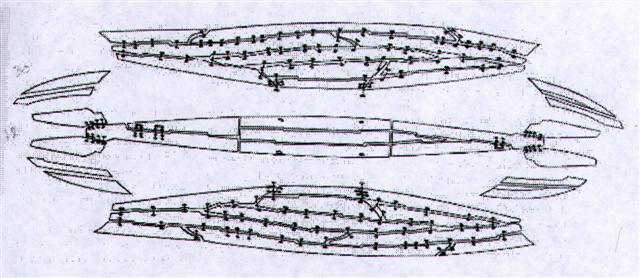
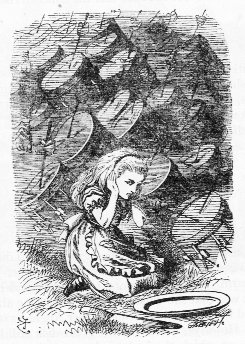
 |
 |
 |
|
Ab1-5 ( → 25 * 27
= 15 * 45) |
Ab1-6 |
Ab1-7 (1341) |
|
Oct 26 (412 - 6 -
107) = 299 |
Oct 27 (*220) |
ρ Lupi (221.0),
TOLIMAN = α
Centauri
(221.2), π Bootis (221.8), ζ Bootis (221.9) |
|
17 Aug (229 = 299
- 70) |
18 Aug (*150) |
19 Aug |
|
16 Febr (412) |
17 Febr (413
→
14 * 29½ |
(14 * 29½ + 1) → *41.4
Bharani |
| atua ata Rei - tuu
te Rei hemoa |
i ako
te vai |
|
Ako. To sing, to recite:
he-ako i te kaikai, to recite the [text
accompanying a] string figure kaikai;
he-ako i te rîu, to sing rîu. Vanaga.
Song. Ako hakaha'uru poki = 'song to make
children sleep'. Barthel. Ákoáko, to recite
hymns in honour of a deity. Vanaga. |

 |
 |
 |
|
 |
 |
 |
|
Ab1-8 (1335 + 7) |
Ab1-9 |
Ab1-10 (90 + 580 + 10 = 1344) |
Ab1-11 |
Ab1-12 |
Ab1-13 (1347) |
|
29 (→ 152 + 150) |
Oct 30 |
Halloween |
Samhain (*225) |
2 (306 = 123 + 183) |
Nov 3 (*227) |
|
20 Aug (*152) |
21 Aug |
22 Aug |
23 Aug |
24 Aug (236) |
25 Aug (*157) |
| |
|
ZUBEN ELGENUBI |
 |
|
|
|
CLOSE TO
THE FULL
MOON: |
|
April 29 |
30 |
Beltaine |
|
2 (50 + 72) |
3 (123) |
4 |
|
19 Febr |
20 Febr (*336) |
21 Febr (29 + 21) |
22 Febr |
Terminalia |
(*340) |
| |
|
BHARANI |
|
DENEBOLA |
MENKAR |
| Ko te
maitaki - ko te
maharoga |
hetuu e roia |
- |
e
ragi huhuki |
eaha ia |
ko te Rei oho ia mai |
|
Haro. To pull; popohaga o te rua raá, i
haro i te aka o te miro, on the morning of the second day, they
pulled up the anchor of the boat. He haro i te hagu a roto,
to draw in air, to breathe. He-haro te vaka i te au , the
boat is towed off course in the current. Vanaga. a. to point, to
raise the arm, to stretch out the hand or other member, to spread,
to point the yards. b. to hoist, to pull up, to entice. c. to
stiffen, to grasp, to squeeze. Haroharo, to point, to limp.
PS Sa.: falo, to stretch out. To.: falo, to stretch
out, to make tense. Fu.: falo, to stretch out, to lay hands
on. Churchill.
Hu. 1. Breaking of wind. T Mgv.,
uu,
to break wind. Mq., Ta.: hu, id. 2. Whistling of the wind, to
blow, tempest, high wind. P Pau.: huga, a hurricane.
Churchill. Mgv.: hu, to burst, to crackle, to snap. Ha.: hu, a noise. Churchill.
|
 |
 |
 |
 |
 |
 |
 |
|
Ab1-14 |
Ab1-15 |
Ab1-16 |
Ab1-17 |
Ab1-18 |
Ab1-19 |
Ab1-20 |
| e honu paka |
e kana ia
- kana rei ia - e heheu ia |
e pure ia |
ka tuu i
te ragi |
|
Paka.
1. Dry; to become dry (of things); pakapaka,
to dry out. Te paka is also the
name of the moss-covered areas, between the small lakes
of volcano Rano Kau, through which one can pass
without getting one's feet wet. 2. To go, to depart; he-paka-mai,
to come; he-oho, he-paka, they
go away. 3. To become calm (of the sea): ku-paka-á te
tai. Pakahera, skull, shell, cranium; pakahera puoko tagata,
human skull; pakahera
pikea, shell of crab or crayfish. Gutu pakapaka,
scabbed lips. Hau paka, fibres of the hauhau
tree, which were first soaked in water, then dried to
produce a strong thread. Moa gao verapaka,
chicken with bald neck. Ariki Paka, certain
collateral descendents of Hotu Matu'a, who
exercised religious functions. Vanaga. 1. Crust, scab,
scurf; paka rerere, cancer; pakapaka,
crust, scabby. 2. Calm, still. 3. Intensive; vera
paka, scorching hot; marego paka, bald; nunu paka, thin. 4. To arrive, to come. 5. To be
eager. 6. To absorb. 7. Shin T. Pakahera,
calabash, shell, jug. Pakahia, to clot, curdle,
coagulate. Pakapaka, dry, arid, scorching hot,
cooked too much, a desert, to fade away, to roast, a
cake, active; toto pakapaka, coagulated blood; hakapakapaka, to dry, to broil, to toast.
Pakahera pikea, shell of crab or crayfish.
Churchill. |
|
Nov
4 |
5 |
6 (310) |
7 |
8 (301 + 11) |
9
|
10 (314) |
|
SEPT 1 |
2 (*165) |
3 |
4 |
5 |
6 |
7 (250) |
|
ZUBEN
HAKRABIM |
|
ZUBEN
ELSCHEMALI |
|
|
|
|
|
CLOSE TO
THE FULL
MOON: |
|
ALGOL |
|
|
ZIBAL
(*48.0) |
|
ALGENIB
PERSEI
GIENAH
|
|
|
May 5 (125) |
6 |
7 |
8 |
9 |
10 (*50) |
11 |

 |
 |
 |
 |
|
 |
 |
 |
 |
|
Ab1-21 |
Ab1-22 |
Ab1-23 |
Ab1-24 |
Ab1-25 |
Ab1-26 |
Ab1-27 |
Ab1-28 |
| ka maroa te ragi - e
ragi maú ia |
e ruku te manu |
ki te ika
- mo tui no te ariki - nuku hakapiri te aha - no te
ariki - e hau tui ika |
- |
mo te ragi |
mo te manu |
SIRRAH |
Nov 12
(316) |
13 |
COR
SERPENTIS |
|
Nov 15 |
16 (320) |
VRISCHIKA
|
SCHEDIR |
|
May 12 |
13
(133) |
14
(499) |
TAU-ONO |
ALCYONE |
May 17 |
ZAURAK |
ν Tauri
|
|
MARCH 9 |
10 |
11 |
12 |
13 |
3-14 |
IDUS |
16 (75) |
|
Mo. For (prep.): mo te aha,
what for? (also: mo he); moira,
because of this; mo aha-mai-á, ana oho au,
what use is it to me, if I go? Vanaga. 1. For (moo);
ika ke avai mo, abuse (bad treatment too
great for); riva mo tere, navigable (fit
for voyaging); pu moo naa, hiding-place
(hole for hiding); koona moo tomo, port
(place for entering); moo iharaa,
ordinary; moo te oone, shovel (for the
sand). PS Mgv.: mo, for. Sa., To., Fu.,
Niuē, Ma., Aniwa:
mo,
id. 2. In order that (moo);
mo okorua,
to accompany, to adjoin (in order to be
two-together); moo arai,
to join (in order to be together). 3. A negative
value (moo);
moo aneira,
inopportune. Churchill. |

 |
 |
 |
 |
 |
|
Ab1-29 |
Ab1-30 (700) |
Ab1-31 |
Ab1-32 |
Ab1-33 |
|
Nov 19 |
20 |
21 (325) |
22 |
23 |
|
LIBERALIA |
MARCH 18 |
19 |
20 |
21 (80) |
 |
 |
 |
 |
 |
|
Ab1-34 |
Ab1-35 |
Ab1-36 |
Ab1-37 (707) |
Ab1-38 |
|
Nov 24 |
25 |
26 |
27 |
28 (332) |
|
MARCH 22 |
23 |
24 |
25 (84) |
26 |
 |
 |
|
Ab1-40 (670 +
40 = 710) |
Cb2-21 (392 + 45) |
|
Nov 30 (334) |
Going back from Ab1-40 at November 30 (334
→ 1334 - 1000) to March 21
(80) implies a first step to Vrischika in November 17
(334 - 13 = 321 (*241) and then back to Halloween in
October 31 (304), from which the distance to 0h
should be
304 - 80 = 224 days (→ 32 weeks):
 |
*17 |
 |
*13 |
 |
|
Ab1-10 (680) |
Ab1-27
(697) |
Ab1-40 (710) |
|
ZUBEN ELGENUBI (*224) |
VRISCHIKA (*241) |
Nov 30 (334,
*254) |
Halloween (October 31, 304,
*224) should be 10 days after Aa8-85 (670), the last
glyph on side a at October 21 (294, *214).
We can then count from
my table over the Tahua
text and find that 0h (March 21, 80) ought to be at
glyph number 456 (= 670 - 294):
456 → 45 * 6 = 270 = 9 * 30
and 4 * 56 = 224 = 32 * 7.
|
a1 |
90 |
90 |
b1 |
82 |
82 |
|
a2 |
85 |
175 |
b2 |
85 |
167 |
|
a3 |
76 |
251 |
b3 |
77 |
244 |
|
a4 |
82 |
333 |
b4 |
80 |
324 |
|
a5 |
83 |
416 |
b5 |
80 |
404 |
|
a6 |
40 |
456 |
b6 |
92 |
496 |
|
44 |
500 |
|
a7 |
85 |
585 |
b7 |
84 |
580 |
|
a8 |
85 |
670 |
b8 |
84 |
664 |
|
sum |
456 + 214 |
sum |
664 |
.Here is Aa6-40 (→ 10 *
64):
 |
 |
 |
 |
 |
 |
 |
|
Aa6-39 |
Aa6-40 (456) |
Aa6-41 |
Aa6-42 |
Aa6-43 |
Aa6-44 (460) |
Aa6-45 |
|






.jpg)



























